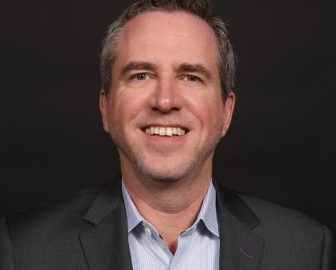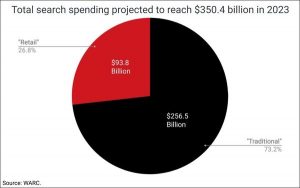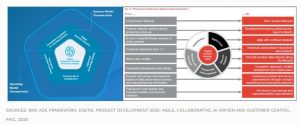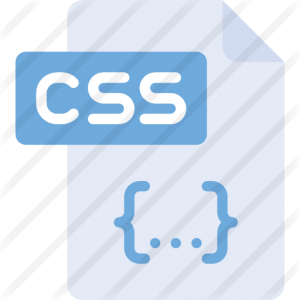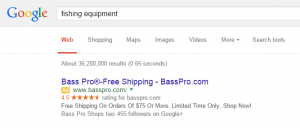IHOP CMO Kirk Thompson shares how his brand has gained a competitive advantage through its strategic Facebook marketing efforts.
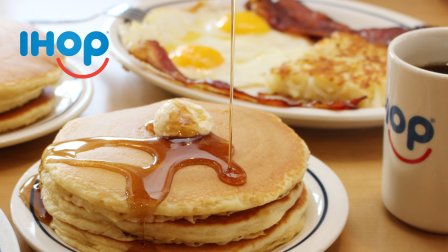
Of all the CMOs I have interviewed, IHOP’s Kirk Thompson may be the happiest.
“I have truly the best job in the world because I get every day to wake up and to think about pancakes, and fun,” says Thompson who leads the iconic breakfast brand’s marketing efforts.
Having earned more than 3.5 million Facebook followers, Thompson has much to be happy about when it comes to IHOP’s social media strategy. With so many fans, Thompson says Facebook is a leading platform for the brand, giving IHOP a clear competitive advantage.
“Most of the time, what we feel back from people is a tremendous amount of brand love — there’s so much love for the IHOP brand,” says Thompson.
The CMO says his focus is to continue to build on all the love and affection IHOP has garnered since it opened its doors in 1958.
“It’s just the best thing to be able to work with the brand — and to be part of a brand where the logo is a literal expression of how people feel about your brand.”
As a Facebook marketing leader, we asked Thompson how his team continues to win so much love from the brand’s followers. Here’s what he had to say.
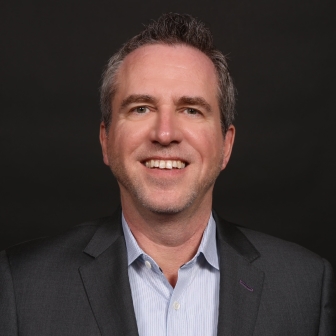
Kirk Thompson
CMO @ IHOP
Takeaways:
1. Start with one really great story that is authentic to your brand.
2. Tell that one story better, differently, or more colorfully than it has been told before.
3. Invite a conversation by encouraging your audience to comment, share and make suggestions throughout the storytelling moment.
Amy Gesenhues: Before we dig into the brand’s Facebook marketing strategy, can you give me a quick overview of your role at IHOP?
Kirk Thompson: As a CMO, my focus has to be on ways we continue to be pursuing leadership, pursuing innovation, pursuing most that we stay involved and connected to more people, and eating-out occasions — and all the good business metrics.
From a brand health vibrancy — and just sheer size of heart and affection standpoint — our number one focus is about always being part of people’s lives, inviting more people to be at our restaurants, have a great breakfast, have a great dinner with their kids and their families.
When you have that leadership and innovation history people have always known you for, there is a constant challenge every day to accelerate the menu, accelerate the marketing and the media messages, and the content forms, and how we tell our story.
Also, of course, how we bring that to life in our restaurants and support our franchises. Those are my core focus points as CMO.
AG: How is IHOP’s marketing team structured, and how big is the staff dedicated to the brand’s social efforts?
KT: The team is broadly structured as a group that leads all of our marketing and marketing calendar activations and strategies, and then a group that leads all of our culinary and menu development.
The third group that is pertinent to this discussion is leading all of our media and messaging in terms of creative, and outlets, and channels that utilize those strategies.
The team that leads all of our creative and immediate strategies is about six people deep here in the restaurant support center. Then, obviously, we work with a small set of very critical and important agency partners that support us — whether from a television and radio standpoint, a PR standpoint, digital and social standpoint, and ultimately immediate strategy and buying standpoint.
AG: In addition to Facebook, which social media channels does IHOP focus on?
KT: Starting about 18 months or two years ago, with the help of MRM/McCann, our lead agency of record for digital and social, we made significant changes in not only the level of content, but the number of platforms and the style and voice and messaging content strategies that we used for each.
We are on a series of eight core platforms. These are the familiar ones that you would expect us to be on. We treat them each as very important and combined to create the whole strategy we do for digital and social. Each one has a very unique personality, a unique voice and tone, but is still very IHOP — very specific to the audience and to the content environment that is there.
We have deliberate pieces of interaction, promotion, conversation, photographic styles, video styles, promotional messages that we put for each of those based on the audience. We’re on Facebook, Twitter, Instagram, Snapchat, Vine, Tumbler, YouTube and Pinterest.
AG: How is IHOP’s Facebook strategy unique from strategies for your other social channels?
KT: Facebook is the channel with truly the most mass and the most inclusive reach. Our brand, our restaurants, are enjoyed and frequented by children all the way through grandparents who are bringing grandchildren, and every group in between. Facebook has always been a leadership platform for us.
Facebook is an environment in which people are truly socializing and sharing among friends and family. It’s not that scrolling behavior that sometimes can color the habits of how people interact with some of the other channels. Facebook is a moment when people really do pause, connect, share, review, talk about what’s going on among their friends and family circle.
In the case of Facebook, we have three-and-a-half million followers. We are at a competitive advantage in sheer number of fans and followers, plus the level of content and conversation and sharing and liking that goes on with IHOP is significant. We treat that as an important crown jewel in how we interact with, and are invited into, the lives of our guests every day.
That same thought process, that same objective of being an invited guest to our fans and to our followers is certainly a core premise that we use across all the rest of the social media channels. Each one has a more purposeful voice based on the type of audience that we find there that is connected to IHOP, the type of conversations and the ways people interact with it.
AG: What type of content and images have you found attract the biggest engagement on Facebook for IHOP?
KT: There are some certain favorites about breakfast. I would be remiss in not talking about coffee or bacon.
A perfect example — On April Fool’s Day, we posted a picture of a bacon dispenser that was sitting on the table. In every table in IHOP there is a caddy of syrups that are enjoyed and part of the play and interaction of great pancakes. You get choices of four syrups that are on the table.
Instead, we replaced it in this image for April Fool’s Day with a bacon dispenser, which was wildly popular.
The brilliance of something on an April Fool’s Day — and the brilliance of something that is just organic and truthful to the brand — is it goes instantly viral with that lead question of, “They must have this. This has to be real.” Unfortunately, we have not invented the bacon dispenser yet. It was a perfect example of what went wild.
Bacon is part of being a breakfast leader. We have a great bacon — it’s always the subject of much conversation among our fans and followers. The bacon dispenser was a home run that particular April Fool’s Day.
Coffee is a critical one, because people have come to know us literally since the day we opened for our never-empty pot that’s on every table. Obviously, it’s still fresh to order when people arrive in the restaurant and ask for coffee. It’s a great value, but it’s also core to the experience of being in an IHOP — that never-empty coffee pot and never-empty coffee cup.
I will tell you also — ever since we introduced the new logo a year ago — any time we post something that looks like a piece of merchandise, or a piece of the experience that features the new logo on it — whether that is a coffee mug or any sort of other item that we showcase that features the logo — people go bunkers over it. There’s just a response to the logo, which is very gratifying, I have to say, because it’s a great expression of our brand.
AG: IHOP has a tremendous following on Facebook. Can you point to any specific events that have helped grow your following of more than 3.5 million fans?
KT: I would tell you that our growth in fans and followers across any of the platforms, but obviously Facebook at three-and-a-half million, has been a buildup over time, as it is for any brand.
The factors that really show a huge jump in increase is when we have brought our guest’s attention to a specific event or to a specific linkage to our community — not simply promotions into food, but to our community.
We have over 1,600 restaurants in the US. When those restaurants show that they are vibrant parts of the community through activations like what we do with National Pancake Day, it just brings a whole lot of attention and organic fan and follower buildup.
Honestly, when we have brought special attention and focus to events like Nation Pancake Day, that’s when we’ve seen big increases in our fans and followers, as well as, of course, the regular cycle of new menu items and innovations that we bring to bear.
The really big spikes tend to happen when we have really brought the brand firmly into the community.
AG: Tell me more about your National Pancake Day campaign.
KT: National Pancake Day is our day in March. We align with Children’s Miracle Network Hospitals and some other local charities and philanthropic partners to really bring attention to the needs of critical care and critical needs for children, and health and wellness.
It’s a chance when we give away a free plate of pancakes, a stack of pancakes. In return, we ask for donations that we contribute, a huge number, to Children’s Miracle Network Hospitals every year.
We’ve raised over $20 million in the series of campaigns we’ve done. Every time we do that, we escalate the level of conversation and brand love that we have.
This year, for instance, we executed and implemented a social media war room with MRM/McCann, which meant we had a team of people — like a newsroom — sitting around managing and actively participating with all the conversations that we’re happening nationwide on that one specific day in March.
All the excitement that people brought about the brand, about the special offer, about the partnership with Children’s Miracle Network Hospital, about what a difference having IHOP in the communities, and what that partnership meant to families nationwide.
When we do things like that and give the restaurants a chance to show, shine and showcase not only a great menu and a great experience, but also great connection to the community, it makes a powerful difference in how people respond to us in social media.
AG: Among the products and tools offered by Facebook, which have delivered the most sizable engagement for your brand?
KT: I would point very recently to Facebook Live. With Facebook, our strategy is usually that broad reach, but it also comes with an innovation bias that Facebook has. They’ve been very active in expanding content forms and the ways in which brands like ours can immerse themselves in great conversations with the right content.
It’s more than just simply positing a picture of the new menu or the new food items. Every time we’ve been able to take something that’s a little bit more sight, sound and motion into play, we obviously realize a greater benefit, because we’re a restaurant experience. The only sense I can’t get through any of those media is smell and scent. If I could get aroma of pancakes through it, I would be a big winner.
In the meantime, the sight, sound, motion — just the sheer dynamic of involvement that it allows us to do — is very powerful.
When I fast forward to the most recent example, Facebook Live gave us a chance to provide a long-form video content experience for our guests and to put our menu item in a very thoughtful schematic linkage. It was a great matchup of forum, reach, content and schematics.
We have Paradise Pancakes that we were introducing to kick summer off.
That was our very first one. It was obviously a big kickoff for us. We post video content across a number of channels and a number of platforms. All the platforms have some sort of video content.
We are an early adopter. That is absolutely the way we think about it — a breakfast leader in the menu, we should be breakfast leader in the way we actually interact, and talk with, and invite our guest to speak to us.
Paradise Pancakes on Facebook Live was the first time we put a video form in there.
We put out a whole suite of other video content. The most recent one that was very popular was a Tasty video we did promoting our Double Dip French Toast, which was a new promotional item we put on the menu earlier in first quarter.
The Tasty video is a perfect forum for us to showcase how does that get made and to invite people to see how special and tempting it should be for them to come to the restaurant.
That video did very well for us. It set a new standard for us in terms of shares and likes and comments — Facebook Live blew that away and became our number one video we have put into any sort of environment. It became very quickly a piece of video content that not simply attracted looks, but created stickiness.
AG: How does Facebook directly help you with your marketing efforts on the platform?
KT: Being an early adopter of anything means that we own the accountability of being very precise upfront about what our expectations are of a new channel, or a new forum, or a new content vehicle.
We have our traditional metrics always with anything in digital and social media. The things that you would customarily expect around anything to do with views, and time spent with the content, and shares, and likes, and comments, and all the normal engagement metrics.
For us, social media really isn’t just purely social for the sake of content and conversation. It is about commercial driving benefit, and brand heath building benefit. We always put into place some thoughtful set of metrics for any campaign we execute, no matter what channel or media outlet we’re working with, that builds in sentiment, that builds in shares, and likes, and engagement, but, also shows some delivery against intent to purchase, intent to come back again, intent to visit and bring people with you. Those are the metrics.
In the case of Facebook, they work with MRM/McCann to bring us the opportunity to participate early, to be the first among our competitors to take advantage of the new platform. To do that, they gave us guidance about what content they thought would be most appropriate for it.
At the end of the day, it’s our story to tell. It’s our guest experience and what we know is connecting to our guests, and fans, and followers and what people respond to.
In the case of the Paradise Pancakes, we knew what we wanted to do from a video standpoint and what we would actually broadcast. What we wanted to get out of it from a metric standpoint had to do with all those standard metrics, but a real healthy expectation of could it actually generate intent to purchase?
What we saw were very strong responses in the comments about intent to purchase, intent to visit, all sorts of comments throughout the day as we went through the live broadcasting: “I’ve got to go to IHOP now.” “I’ve got to stop on my way to work.” “I’ve got to stop after school.” “I have to go and get some of those Paradise Pancakes. You are making me hungry.”
All those things take what is fun, and conversational, and amusing, and engaging from a content standpoint that is sometimes the subject of social media and move it very squarely into commercial, transactional and action-influencing behavior.
Those are the ways in which Facebook certainly is aligned with MRM/McCann in helping us fine-tune, and look for, and figure out ways for our team to interact through the platform — and make certain that we get the best benefit out of it, but is consistent and authentic with our brand, so people don’t accuse us of just being raw promotional in form and forum.
AG: How has your Facebook marketing efforts and engagement informed your brand’s overall marketing strategy?
KT: I would tell you that between Facebook and Instagram, we probably have had the most prolific and important listening and learning that we’ve gotten from our audience. I say that with a lot of respect and healthy appetite for more.
We treat that as a very precious and important part of our brand that our fans and our followers are so in love with and in touch with our brand that they want to comment back to us regularly.
There are posts regularly on Facebook that our agencies are flagging for people asking for various things, wondering about great flavors, wondering about when something’s coming back to the menu, wondering about how can they get a particular item, when can they get that, the particular item, how they like the new restaurant design, the new restaurant environment as we remodel our restaurants. They aggressively and eagerly and enthusiastically are telling us about our service, our experience, our menu, our marketing messages, what we post, what we showcase, how great the food looks, how great the food tastes.
We’re listening constantly to that. When I look at Facebook with its reach, it’s such a critical player in that specific space for commenting about all aspects of coming to IHOP and coming together over a great breakfast at IHOP.
I think the listening and intelligence that we gained from social media channels in total is so significant to re-directing, to focusing, to channeling our messages across all our platforms. When people really respond very big and specific to a particular item, we take note of that, and we reconsider that we need to increase and elevate that messaging, expose more people to it in more channels.
People ask about the coffee and the bacon, because those are very particular flavors that people enjoy. People ask about the syrups all the time. Which syrups do people enjoy most? Which pancake flavor should have which syrup on it? These are things that you only get by virtue of social media.
It’s up to each brand to decide whether that’s precious information to act on and utilize in their messaging strategies — or whether it’s just intelligence gathering that helps inform maybe some internal processes.
Marketing Land – Internet Marketing News, Strategies & Tips
(46)
